Several years ago, Brian Dean, owner of the popular Backlinko blog, analyzed the results of 1 million Google search results in partnership with Eric Van Buskirk and several data partners, trying to understand what it took to rank a piece of content in the organic SERPs.
One of the team’s findings was that longer content tends to rank higher in Google’s search results – in particular, that “the average Google first page result contains 1,447 words.”
Dean’s recent research backs up the value of longer content. During his analysis of more than 912 million blog posts, he found that long-form content performs better, with longer articles capturing more backlinks and social shares on average than shorter pieces (interestingly, the “sweet spot” for social shares was a length of 1,000-2,000 words):
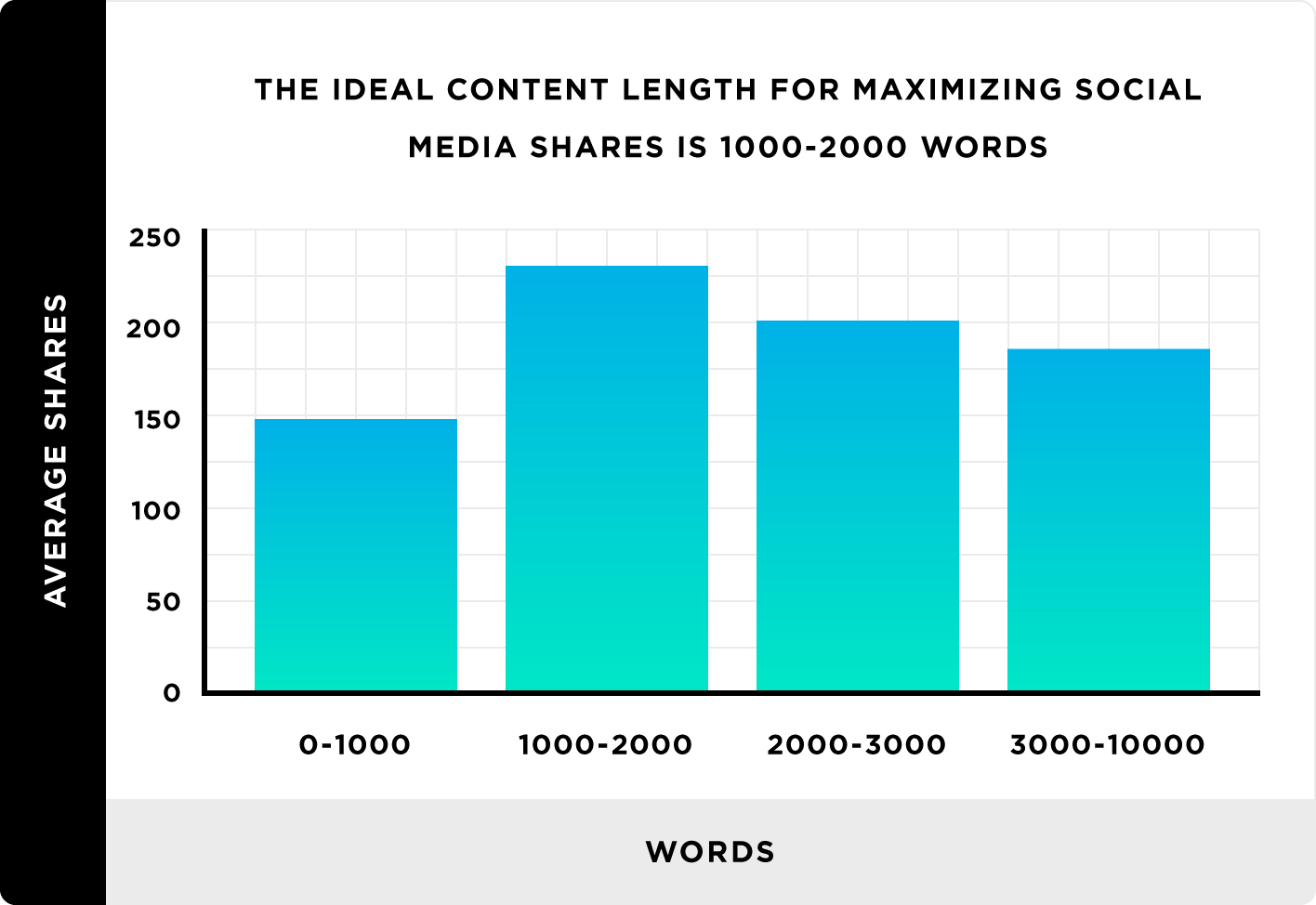
Taken together, you’d assume that this means every piece of content you write should hit that magical mark around 1,447 words, right? Not so fast. In my work with Single Grain clients, I’m seeing evidence that a more nuanced approach to content standards makes more sense.
The Case for Industry-Specific Content Standards
It’s true that great content is important for every business, no matter what niche or industry it’s in. But what actually constitutes “great” varies by industry.
Take the travel niche as an example. If you’re in this space, Google doesn’t want you to create 5,000-word articles, because those customers don’t want long articles describing different places. They want videos and pictures. They want to see reviews from other people. If you look at TripAdvisor, you’ll see that they rank extremely well, even though they don’t have tons of text on every page.
E-commerce is another vertical where context matters. Say you’re searching for “men’s tennis rackets.” You probably don’t want to read a 2,000-word review of each racket’s features – but I’d bet you care that the content you’re reading is up to date. Interestingly enough, in some industries, the quality and length of your content aren’t the only factors that affect its rankings. How current it is plays a role as well.
Ross Hudgens of Siege Media calls this “freshness distance.” On August 9, 2018, his team searched Google for “best headphones.” To their surprise, they found that every post in the top 10 had been published before June 20, 2018 – a span of just over a month, despite the huge amount of content relating to the keyword online.
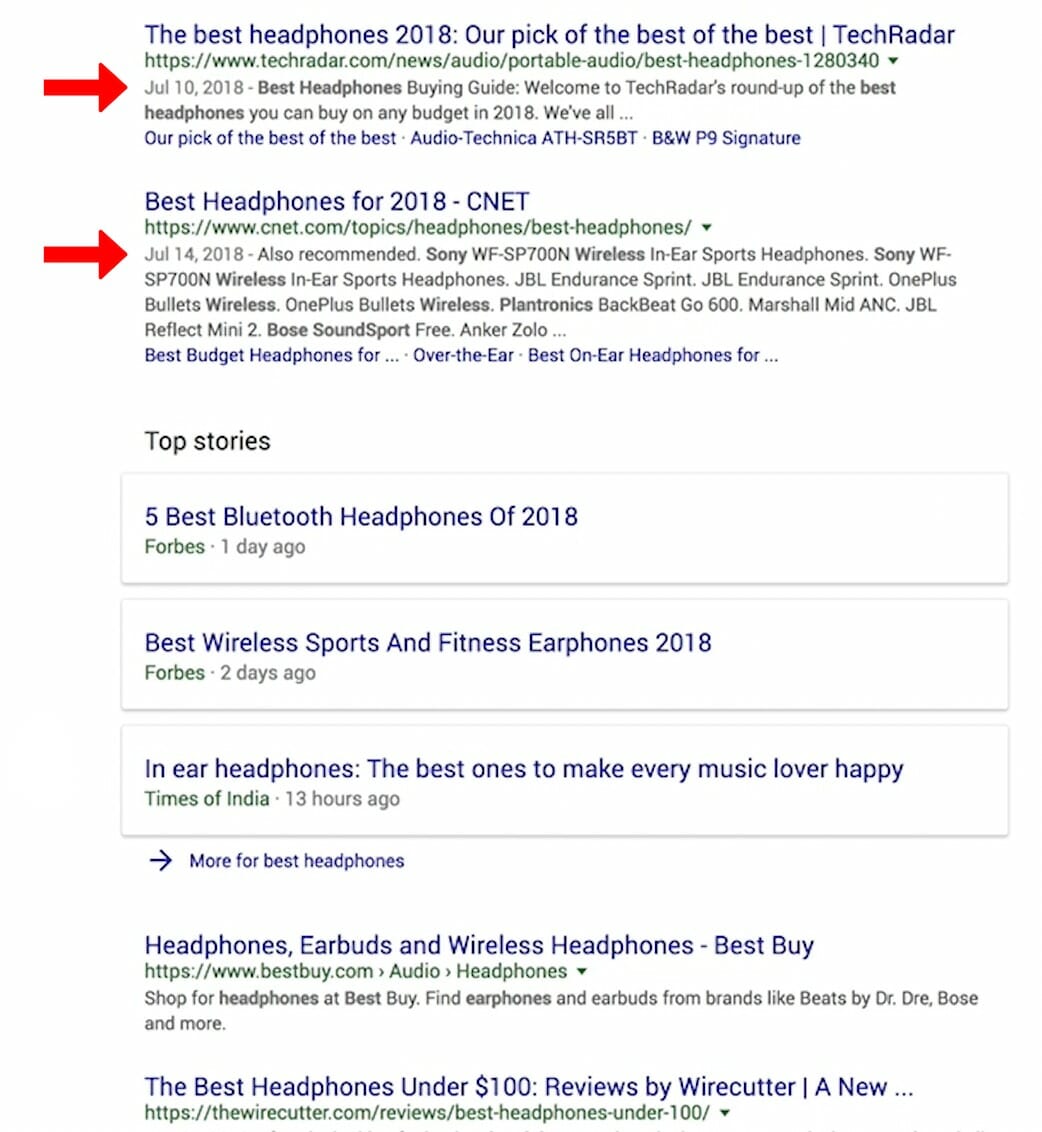
Hudgens’ team then repeated the experiment with the search query “What is good running form?” This time, the oldest search result that appeared came from the year 2000 – a span of more than 18 years.
This led Hudgens to conclude that freshness distance “can tell us a lot about what that search result requires in terms of frequency of update in order to be competitive on that result.” If you’re purchasing a product, you can see why timeliness matters (since chances are you aren’t looking for an 18-year-old tennis racket). But in the case of running form, it’s possible that best practices haven’t changed much over that same span, making current information much less necessary.
Learn More:
- 7 Steps to Stardom: How to Direct Web Traffic to Your New Blog
- Build Backlinks – and Website Traffic – with Blogger Outreach
- 13 Ways to Rank in AI Overviews With AIO Optimization
A Contextual Content Game Plan
So, let’s say you’re starting out from ground zero when it comes to content. How do you put all of this information together? It’d be easy to say “go out and write 1,447-word articles to see results,” but as we’ve seen from the industry-specific guidance above, ranking with content isn’t that simple.
Instead of writing long articles for the sake of hitting some arbitrary metric, change the way you think about content. Share on XWhen you’re first starting out, think of your efforts as contributing towards the creation of a solid foundation that will help you build backlinks to your website. As you build links and your domain authority goes up, you’re going to have an easier time ranking at the top of the search results whenever you publish new content.
HubSpot is a great example of this phenomenon in action. The marketing automation platform was recently able to rank a product page (for a product that didn’t even exist yet) for a competitive keyword phrase in just three months:
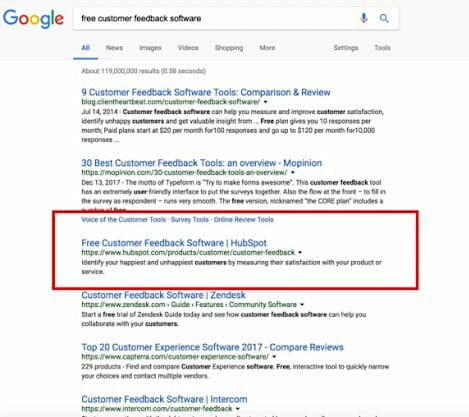
According to Growth Marketing Manager Alex Birkitt, “Good SEO is rarely the result of sporadic hacks and luck. It’s the result of a solid process and playbook.” He continues, “a smaller authority site may have to put a lot more effort into content creation and link building than a large site like HubSpot or Shopify. It all depends on where your competitive advantage lies.”
You may not be able to compete with a content giant like HubSpot overnight, but here’s how you can start build your own solid foundation.
Learn More:
- The Skyscraper Technique: How to Build High-Quality Backlinks to Your Content
- Quality Over Quantity: The Balance of Keyword USAge
- The Content Marketer’s Guide to Keyword Research
- 30 Ways to Come Up with Great Ideas for Your Blog Posts
Analyze Your Industry’s Results
Take your target keywords and look at the top 10 results that appear in Google’s search results. Look at their word count. Use a tool like SEMRush or Ahrefs to see the number of domains that each result has linking to it. Dig in deeper to see different trends. If everyone else is averaging 300 words per post, you may only need to write slightly more to rank.
If you’re in Ahrefs, use the keyword difficulty tool to figure out the approximate number of links you’ll need to build to get into the top 10:
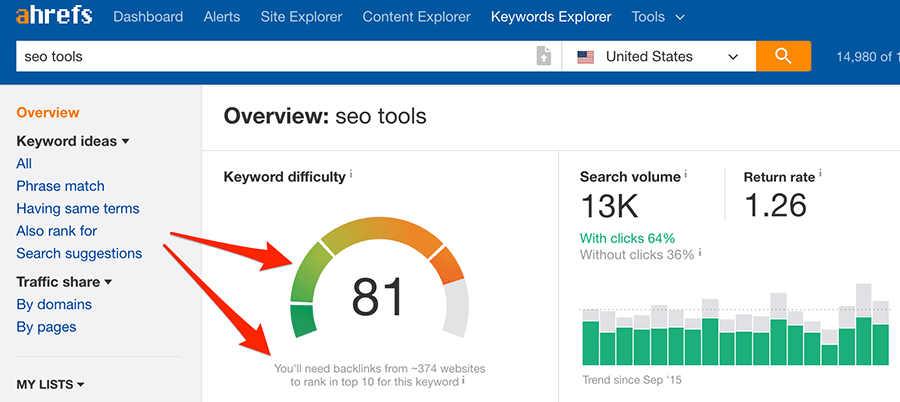
If you see that some of your target search queries are more competitive than others, that’ll help you decide which content pieces to create first to produce the fastest results.
These tools might not be completely accurate, but they can give you a starting point. Once you know what the current standards are, you can go out and use Brian Dean’s Skyscraper Technique to create something you can be confident is going to stand out.
Think Qualitatively, Not Just Quantitatively
Don’t just look at word count and backlink requirement numbers. As you’re evaluating each of the top 10 results, look at their comments. Look at what people love from that site. If you can, ask your audience what they want from you. Survey them. Use tools like UserTesting:
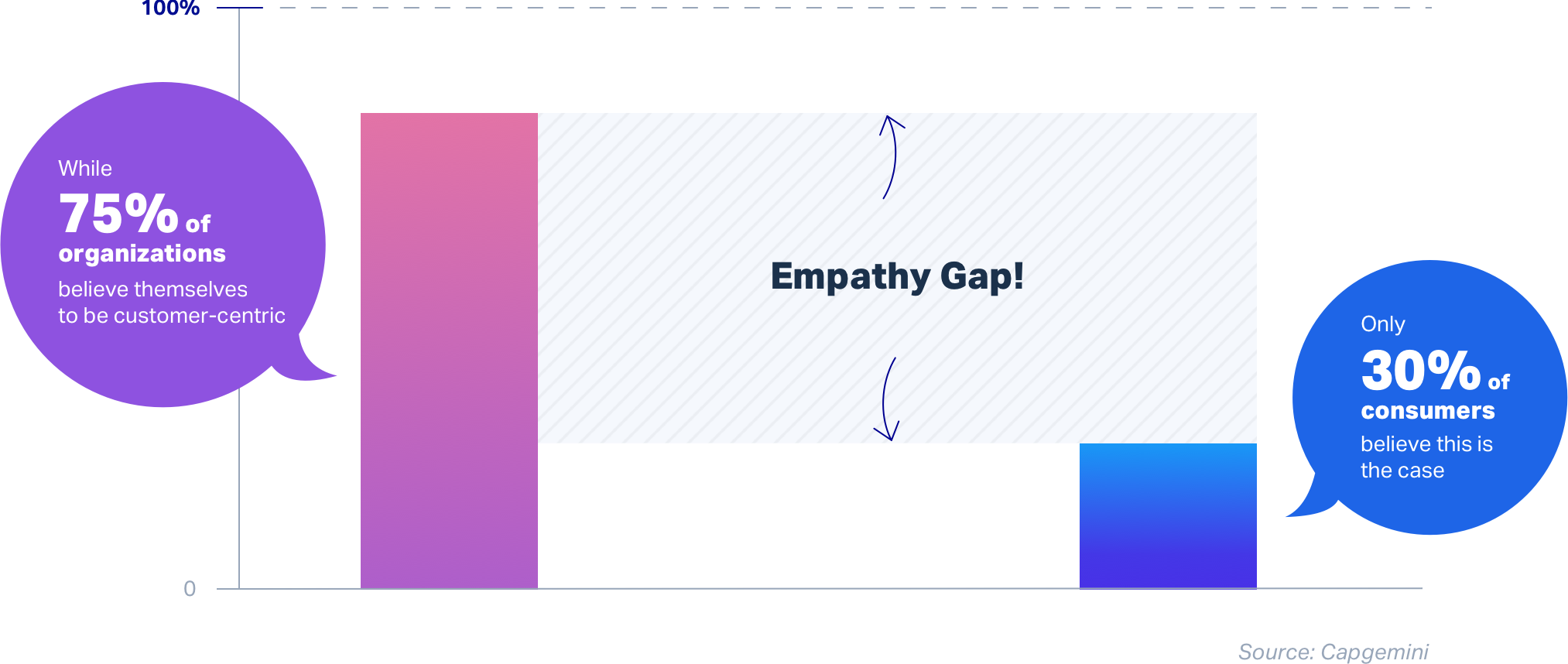
Once you get this feedback, use it to improve your understanding of the type of content you need to create and how long it should be.
Do this kind of analysis enough, and you’ll start to see some trends. If you’re in a B2B business, for example, longer content is typically better. That doesn’t mean you need to be at 1,447 words exactly – it might take 10,000 words to stand out, or you might need just 500. It’s all about what is standard in your vertical.
The same goes for health and nutrition businesses. These niches typically like longer content, but you have to get specific. A food blogger might need to hit different standards than a powerlifting supplements business – you won’t know until you start Googling and researching the terms you want to rank for.
Learn More:
- How (and Why) to Create an Effective Content Structure for Better Ranking
- Omnichannel Marketing: Using the Content Sprout Method to Overcome Info Overload
- Turning a Lead into a Prospect with MOFU Content
- How to Understand Searcher Intent and Use It to Boost SEO Rankings
Think About Searcher Intent
As you’re researching the content that’s currently ranking for the keyword phrases you want to target, pay special attention to searcher intent.
In an earlier article here, Daniel Bishop describes searcher intent as “the reason behind a specific search. Why are people searching for something in the first place? Do they have a simple question that needs answering? Are they looking for a website to learn something? Do they want to buy or sell something?”
But here’s why it’s important to think about searcher intent when you’re planning for content creation. Say you go through the whole process I described above, looking at the current top 10 results for your target keyword and defining the length you might need to hit to rank your own content. If you’ve built all that effort around search queries that don’t have the right intent behind them, all that effort is going to be for nothing. You might get traffic, and you might even get ranked. But you aren’t going to get the conversions you need to actually produce positive content ROI.
WordStream has a great filter for making sure you’re targeting high-intent keywords. Their model breaks keywords into three different groups – navigational, informational and transactional:
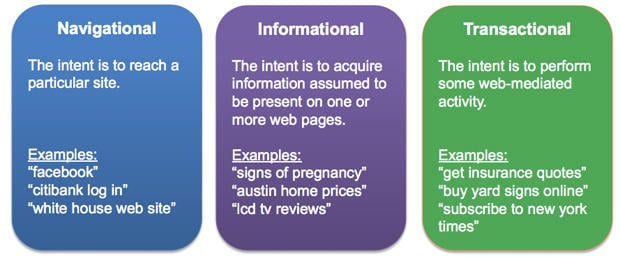
There might be value in targeting informational queries if, by producing content around these phrases, you’re reaching future buyers at the earliest, awareness-oriented stages of their buying process. But you’re almost always going to get the most bang for your content buck by going after those keywords that fall into the transactional category and indicate high levels of conversion intent.
What transactional keywords look like for your company will vary; activity-driven words look different if you’re an e-commerce seller versus a SaaS platform or some other type of business. Spend some time brainstorming options that apply to your company, then cross-check them in your favorite keyword research tool to make sure they have sufficient search volume relative to their competitiveness.
Learn More:
- 9 Ways to Repurpose Your Old Blog Content
- 8 Ways to Encourage More User-Generated Content (UGC)
- Never Run Out of Ideas: 7 Content Creation Strategies for Your Blog
- Content Strategy on a Budget: How to Grow Your Online Presence on a Shoestring
Expanding Your Content Creation Efforts
Once you’ve built a solid content foundation, whatever that looks like within your industry, you may find that you’re able to shift your focus. Since you’ll have an easier time ranking with whatever content you create, you might instead focus on:
- Upgrading your existing content by finding shorter or underperforming posts you can strengthen (and improve their odds of ranking) by adding to their length.
- Updating past content – especially if you find you’re in an industry where freshness distance matters.
- Creating pillar content or content clusters, as Neil Patel has done with his 14-chapter “Beginner’s Guide to Online Marketing”
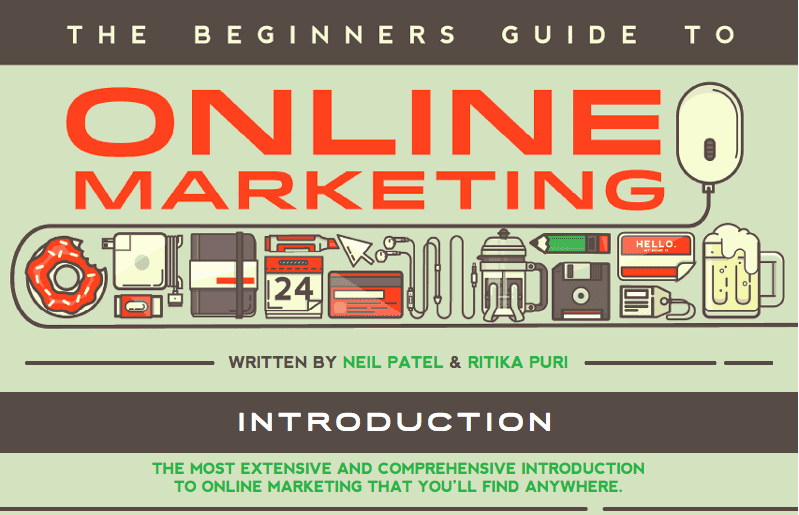
You might even decide to change from prioritizing content creation to working more on backlink building and other types of promotion. Derek Halpern famously suggested that content marketers should put 80% of their efforts into content promotion, versus spending just 20% of their time on creation. That may not be realistic if you’re just starting out, but it can become an option once you’ve built your content foundation.
You can find my basic content promotion checklist here:
Or, if you’re thinking about paid promotion, you can learn more about the different platforms that are out there in this article by Pawel Grabowski. You can even start thinking about building future promotions into your content before you begin creating it.
The expert round-up, for example, is a content creation strategy getting a lot of mileage right now that makes post-publishing promotion easy. The process is simple:
- Choose a topic that you know will interest your audience.
- Email experts in your industry or contacts in your CRM to ask for their comments on the topic.
- Compile the responses into a single post and publish.
Once your post is live, reach back out to the experts who participated, asking them to share the content with their audiences. You’re effectively killing two birds with one stone – not only are you reducing the amount of effort needed as a content creator, you are also leveraging the audiences of your participants once you’ve published.
In a case study for the SmartBlogger website, contributor Brian Lang shares how using this exact strategy to create a round-up on blog promotion tips drove over 4,000 social shares of a single article.
Learn More:
- How to Write Lead Nurturing Content: 7 Proven Tactics
- How to Build a High-Performance Content Marketing Strategy
- [Case Study] The Content Sprout Method: How to Use Strategic Content Marketing to Grow Your Traffic From 0 to Millions
Setting Your Own Content Standards
The key takeaway here is that there’s no single approach that’s appropriate for all content campaigns – but there’s also no need to reinvent the wheel.
You don’t have to write 1,447-word articles to rank in Google. Content is still king, but that doesn’t mean following arbitrary standards. It means figuring out what’s needed in your industry and building a content and SEO strategy that’ll help you meet those standards without wasting time or energy on content creation.
If you’re ready to level up your content marketing strategy, Single Grain’s SEO experts can help!👇
Related Video
For more insights and lessons about marketing, check out our Marketing School podcast on YouTube.
Frequently Asked Questions About Blog Post Length
-
Is longer content always better for SEO rankings?
No, longer content is not always better. While studies have shown that longer content often performs well, the ideal length depends on the industry, audience intent, and type of query. For example, e-commerce product pages and travel guides may perform better with concise descriptions, images, and user reviews, while B2B industries or technical guides may require more in-depth content. It’s essential to analyze your industry standards and target audience needs rather than blindly aiming for a specific word count.
-
How do I know the ideal word count for my content?
To determine the ideal word count, analyze the top-ranking pages for your target keywords. Use SEO tools like Ahrefs or SEMrush to check the average content length of those pages. If most of the top results for your target query have short descriptions, creating a 2,000-word post might not be necessary. On the other hand, if longer articles dominate the rankings, you may need to aim for a higher word count to compete.
You can also use tools like Surfer SEO to help forecast the optimum length of your content, based on the key phrase, competitor posts, and what it takes to make a new piece of content rise through the ranks.
-
Does content quality matter more than word count for SEO?
Yes, 100% of the time, content quality matters more than word count. Google prioritizes content that satisfies user intent and provides value. While longer content may have an advantage in certain cases, it’s only beneficial if it’s informative, relevant, and well-structured. Thin, irrelevant, or keyword-stuffed content, regardless of its length, will not perform well. Focus on addressing user queries comprehensively rather than hitting an arbitrary word count.
-
How often should I update my content to maintain SEO rankings?
The frequency of updates depends on your industry and the “freshness distance” for your target queries. For product reviews, technology news, and trending topics, frequent updates are essential to maintain visibility. However, for evergreen topics like “how-to” guides or basic industry concepts, updates may not be needed as often. To identify if your content needs updating, review the top-ranking pages for your keywords and note the publication dates of those articles.
-
Do shorter blog posts still rank well in Google?
Yes, shorter blog posts can rank well if they meet the searcher’s intent. For example, if someone searches for “how to tie a tie,” they probably want a quick, step-by-step guide with visuals, not a 2,000-word essay. Shorter posts can rank well for straightforward or “quick answer” queries, especially when enhanced with images, videos, or other media. It’s especially true when Google deems even shorter content as highly relevant to a users’s query. These types of posts are often the most worthy contenders for being featured in one of Google’s AI overview results.







